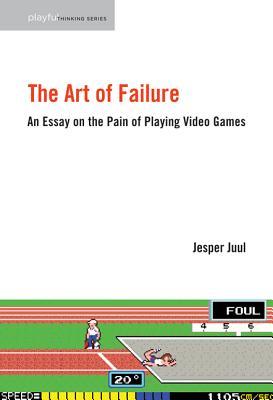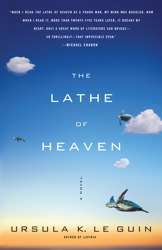
Published by Louisiana State University Press in 2007, Range of Light is a collection of poetry by Catherine Savage Brosman that is largely dedicated to the art of landscape, casting the American Southwest as a land both treacherous and awe-inspiring. This makes “Plums” something of an outlier in the book. While it deals with a variety of fruit popular in the American Southwest, the poem is not a landscape but a still life. At just twelve lines, it’s also easily the shortest poem in the book. And yet, perhaps because of how much it sticks out in Range of Light, it’s my favorite piece in the collection, and the one I’d like to talk about.
Brosman begins the poem with a mimetic description of Santa Rosa plums, and what immediately pops out to me is just how lush her description is. Read through the first stanza, and take note of all the modifiers that Brosman uses:
They’re Santa Rosas, crimson, touched by blue,
Catherine Savage Brosman, “Plums,” lines 1-4 (emphasis added)
with slightly mottled skin and amber flesh,
transparently proposing by their hue
the splendor of an August morning, fresh
Even excluding the adjectives that function more like subject complements than modifiers (e.g., “crimson,” “fresh”), that’s five modifiers in the span of four lines, one of which (“slightly”) modifies another modifier. This is perhaps surprising to see from an accomplished poet. When we first start writing poetry, we are taught to write with nouns and verbs, to use adjectives and adverbs sparingly lest we allow our verse to be wordy and imprecise. Why say someone “ran quickly,” we are told, when saying they “sprinted” is both more concise and more evocative?
Yet Brosman’s heavy use of modifiers seems appropriate for her subject. First, the speaker draws attention to the multifaceted nature of the plums’ appearance. They are, as Gerard Manley Hopkins might call them, “dappled things”: bright “amber flesh” beneath dark “crimson” skin, which itself is “mottled” and “touched by blue.” The interplay of colors defies a compressed description. The closest Brosman comes to that ideal is by likening the plums to “the splendor of an August morning,” and it is true that the colors listed would be found in a summer sunrise. But importantly, the plums call to mind the splendor of that scene, not just the scene itself. They promise decadence, and the poem delivers on it.
Brosman’s language is not the only decadent element of the poem. Formally, “Plums” is written in heroic quatrains: four-line stanzas of iambic pentameter rhyming ABAB. The form has a stately rhythm to it, and it tends to suit grand and grave subjects. We see it used, for example, in John Dryden’s “Annus Mirabilis” and in Thomas Gray’s “Elegy Written in a Country Churchyard.” The form is a little rich when describing plums, but then again, so is likening their appearance to the great expanse. One senses that the speaker wishes to capture the subjective experience of these plums: that they’re brilliant, and probably delicious.
However, things are not always as they seem, and in the second stanza the picture of these plums gets more complicated. That initial “but” in line 5 carries a lot of weight here. True, Brosman has given the plums contrasting qualities prior to this point, but those qualities have been in harmony rather than conflict: both the dark skin and bright flesh are necessary to suggest an August morning. Here, though, we’re told the plums are “fresh // but ruddy, ripening toward fall” (4-5). Now they’re described as having incongruous elements, as though freshness and ruddiness shouldn’t go together, and the season shifts from summer to autumn. Where there was once clarity, now there is doubt.
As it happens, line 5 also suggests uncertainty in how it wavers from the poem’s metrical contract. Whereas the first stanza is written in strict iambic pentameter—no weak endings, no substitutions—line 5 does not scan so easily. The only ways to read the line as five iambs are 1) to pronounce “toward” as two syllables, with an unnatural stress on the first syllable, or 2) to pronounce “ripening” as three syllables and argue that “ing” should be stressed instead of “toward,” neither of which is appealing. A better way to scan the line is with a double iamb (a pyrrhic–spondee combination: u u | / /): “but rud | dy, ripe | ning to | ward fall.— | “So sweet“. Even scanned this way, the line is unusual for a poem in iambic pentameter; more often one sees a double iamb at the beginning of a line rather than the middle. The effect of this line’s rhythm is to put a sour taste in the reader’s mouth, even as it ends on the word “sweet”.
But of course, that’s the point: despite appearances, the plums are not sweet. When the speaker bites into one, she discovers that it’s “tart” (6). She says that the plum has a “sunny glow perfected in deceit” (7), with the rhyme reinforcing the false promise of a sweet treat. To the speaker, it’s as if the plum’s objective is to trick people into eating it, and so she finds a new appearance within it: the “emulation of a cunning heart” (8). This bitterness is a far cry from the painterly calm of that first stanza.
I find the reference in the second stanza to William Carlos Williams’s poem “This Is Just To Say” rather fitting. “This Is Just To Say” is a deceptively simple poem in which the speaker apologizes for eating the plums that the addressee has been saving. Specifically, Brosman quotes from the poem’s final stanza:
Forgive me
William Carlos Williams, “This Is Just To Say,” lines 9-12
they were delicious
so sweet
and so cold
One could read this final stanza as the speaker simply explaining why he ate the plums: they were just so hard to resist. But more than that, I get the sense that the speaker is rubbing his transgression in the addressee’s face, reminding them of just how wonderful those plums would have been—”so cold,” indeed. (This is one of the reasons why “This Is Just To Say” has endured as parody fodder. It became a popular meme on Twitter in 2017, and Kenneth Koch’s “Variations on a Theme by William Carlos Williams” spoofed the concept all the way back in 1962.)
If that second reading is correct, that the speaker of “This Is Just To Say” is teasing the addressee instead of apologizing, then it seems that the poor soul who lived with Williams isn’t his only victim. The speaker in Brosman’s poem is aware of Williams’s work, of how he presents plums as these irresistibly refreshing snacks. “This Is Just To Say” isn’t even the only famous poem where Williams sings the praises of plums; he does much the same in “To a Poor Old Woman.” But to the speaker in Brosman’s poem, Williams has not been fully honest, as this Santa Rosa plum has been anything but refreshing.
To recap thus far: “Plums” begins as an ode to the beauty of Santa Rosa plums, a celebration of their complex appearance, but the second stanza reveals that this particular plum does not taste nearly as good as it looks. We may well expect the poem to end there, and I think a lesser writer would do just that. In this hypothetical version of “Plums,” the meaning could be reduced to a variation on “all that glisters is not gold.” That’s hardly a novel sentiment, but if presented in a skilled fashion even clichés still have value.
But the speaker literally refuses to stop there. “I eat it anyway,” she says, “until the pit / alone remains, with scattered drops of juice” (9-10). She neither succumbs to disappointment nor denies it. Instead, she acknowledges the tartness and powers through it. That willingness to proceed despite the sour taste allows her to uncover a more nuanced truth than “appearances deceive,” for the remnants of the plum are “such sour trophies proving nature’s wit: / appearances and real in fragile truce” (11-12). According to this last line, it’s not the case that the tartness is the plum’s true nature, and that the beautiful appearance is a falsehood. Rather, the two coexist, not in pure harmony or pure contrast, but as two parties in “fragile truce.”
In a sense, then, “Plums” is a poem whose ending circles right back to its beginning. The plums really are dappled things—just in a way that’s trickier to unpack.
Thanks for reading! If this analysis has piqued your interest in Brosman’s poetry, then you should check out Range of Light, which is available through the LSU Press website or through Amazon. If, on the other hand, this made you want to read more about William Carlos Williams, then you should check out my analysis of “[The crowd at the ball game].”










